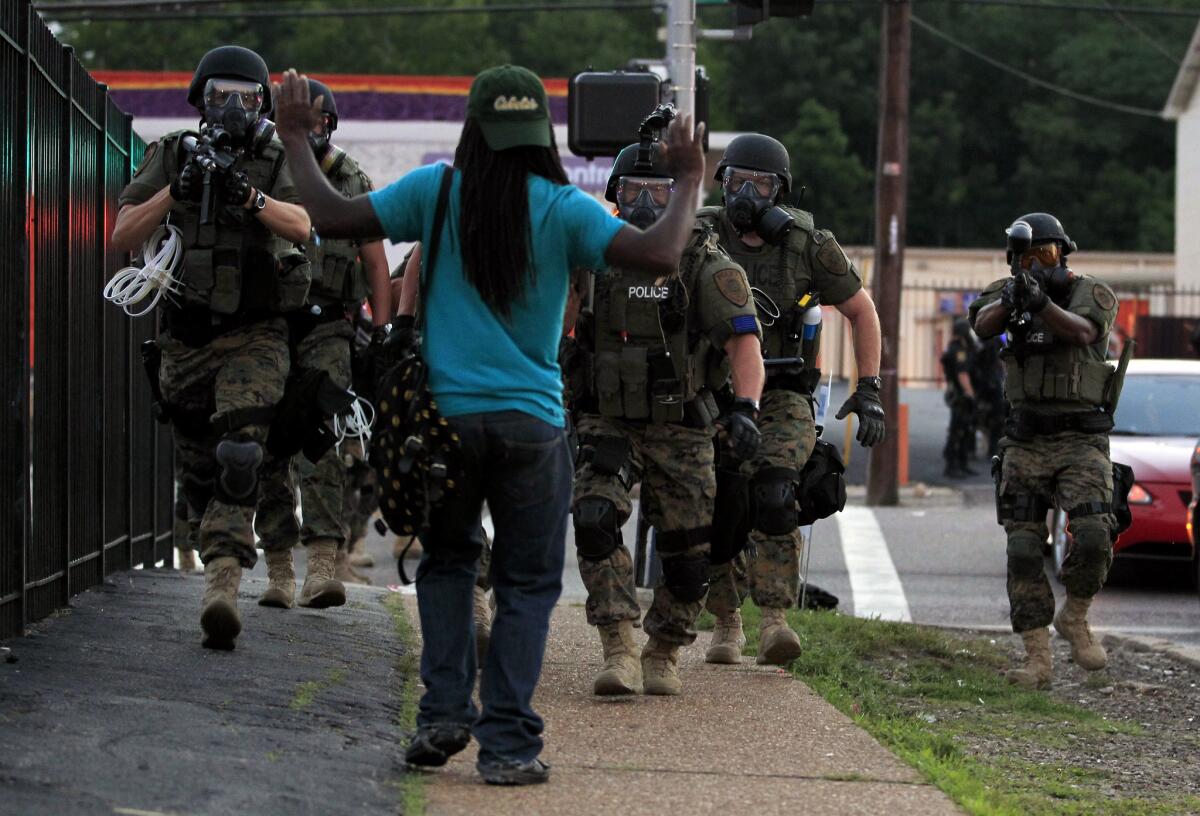Editorial: Demilitarizing America’s police

Police wearing riot gear walk toward a man with his hands raised on Aug. 11, 2014, in Ferguson, Mo.
- Share via
It never made sense for the Pentagon to offer surplus materiel such as grenade launchers and mine-resistant armored personnel carriers to local law enforcement agencies. The practice helped increase the militarization of the nation’s police, leading to such jarring images as assault-gun-toting officers in full body armor arriving in armored vehicles to confront demonstrators during the Ferguson, Mo., protests last year. Police officers enforce laws; military units rout enemy combatants and hold territory. Those two missions should not be commingled.
So we were heartened by President Obama’s announcement Monday that the federal government will remove some of the more extreme tools of war from the list of free items, including tracked armored vehicles, weaponized aircraft, .50-caliber or higher guns and ammunition, grenade launchers and bayonets. Police agencies must also make the case that they need some of the items that will still be available, from drones and battering rams to riot helmets and batons. We take heart as well in the president’s reported desire to find a way to retrieve now off-limits items already in the hands of local police.
The 1033 Program, named after a section of the National Defense Authorization Act of 1997, is in itself not problematic. Since it began in 1997, it has distributed more than $5.4 billion in excess equipment to 8,000 local law enforcement agencies, most of it office furniture, photocopiers, portable generators, tents and other noncombat items. That’s a smart approach to reduce wasting tax dollars. But giving away grenade launchers and armored personnel carriers for use in American neighborhoods goes too far.
The new limits were announced as the president’s Task Force on 21st Century Policing released its final recommendations, which include a “layered” response to demonstrations to “minimize the appearance of a military operation and avoid using provocative tactics and equipment that undermine civilian trust.” The task force also urged police departments to be more transparent in developing and reviewing policies, and to better track demographic details of encounters with citizens, augmented by post-incident “nonpunitive peer reviews” to determine better procedures.
These are sound ideas. As we’ve said before, there is no legitimate reason for law enforcement agencies not to revisit and revise protocols and training that guide how officers engage with their communities. And they should be open about their methods and results, so the public can measure the actions of its protectors.
Follow the Opinion section on Twitter @latimesopinion and Facebook
More to Read
A cure for the common opinion
Get thought-provoking perspectives with our weekly newsletter.
You may occasionally receive promotional content from the Los Angeles Times.










